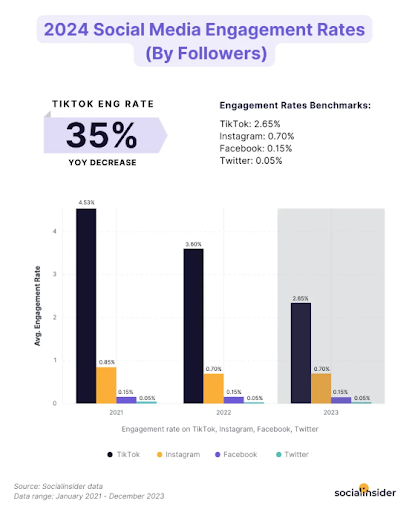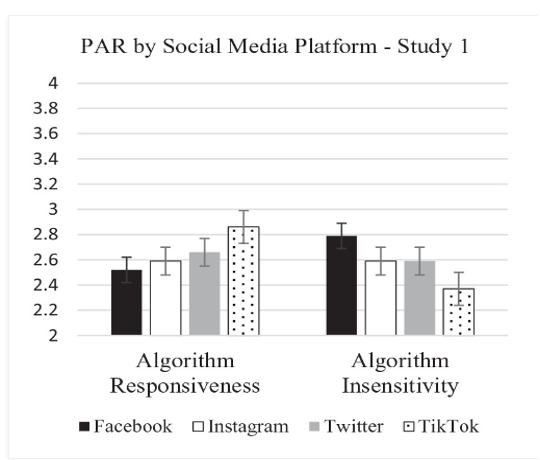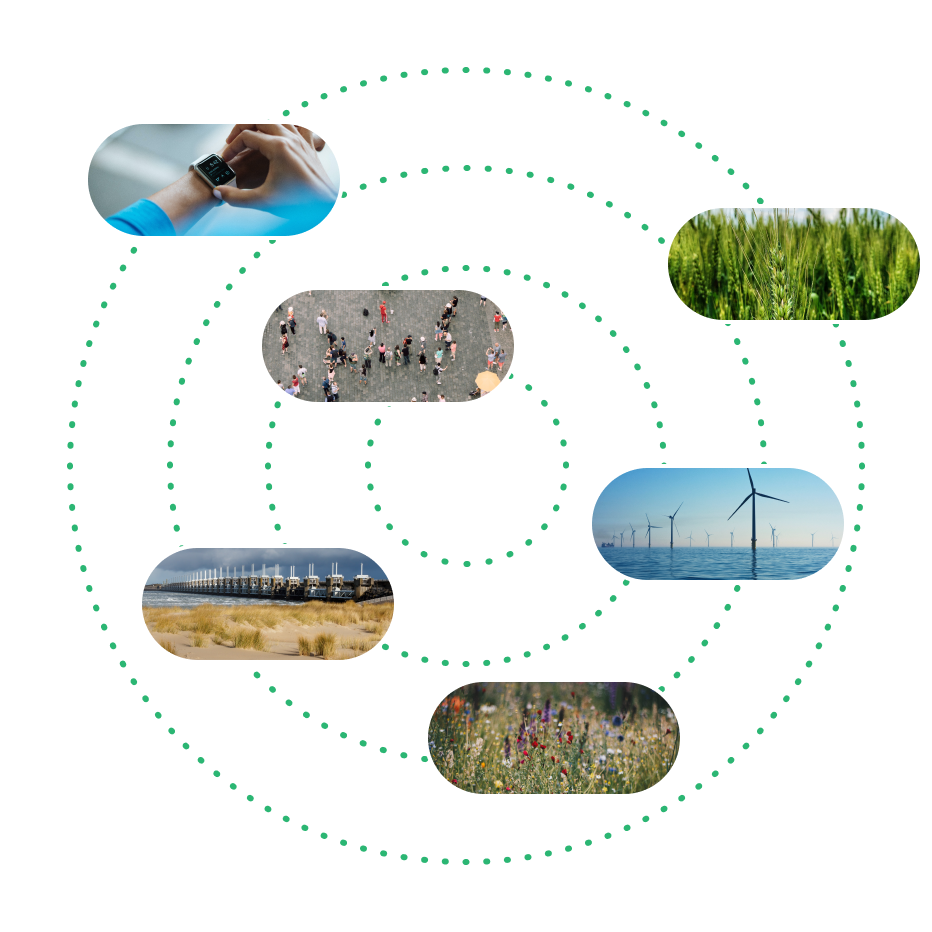Why your research project isn’t attracting social media followers + what you can do about it

Notifications from your smartwatch, your electric car… Messages on Slack, Teams, WhatsApp…
How many inboxes do you check every hour?
In 2022 alone there were 817,000 pieces of content (videos, blogs, memes, etc. etc.) available to watch on streaming platforms.
Every minute, 167 million videos play on TikTok, 4.1 million on YouTube, 70,000 hours on Netflix and 40,000 hours of music on Spotify. In the same year, we spent an average of approx. 2.5 hours a day on social networks.
In 2007, one study estimated the number of ads we’re exposed to at 5,000+ per day.
Today, that’s more like 10,000.
That’s a lot of people competing for our increasingly limited attention.
The “attention economy” is worth billions ($853 billion, to be exact). Brands, corporations, and content creators invest a lot to win a slice of that pie and give the public what they want: “magnetic” content, clickbait, memes, viral videos, etc. etc.
Who can compete with that?
Certainly not research scientists who aren’t experts in digital marketing and don’t have stratospheric budgets. Communicating your progress and achievements in a way that makes them attractive to social media users is a huge challenge. Whether you’re trying to reach the general public or a very specific audience, the key is knowing how to communicate in a way that speaks to each one.
That’s no easy task but, nevertheless, many research projects must rise to it. Plus, many are obliged to measure and report on their impact, including on social media platforms. So they need concrete results to show.
On top of the challenges in getting people’s attention, the way we consume content on social networks has changed a lot in the last three years. More content is consumed all the time, but we interact with it less and less.
A study by Social Insider found that TikTok is the only platform with more than 1% engagement, and even that’s fallen by 35% in the last three years. That means that not even a brand’s followers are interacting with it.

Engagement on TikTok may seem high compared to other platforms, but it’s also falling.
Le’s take a more in-depth look at the reasons it’s so hard to reach your audience:
- More and more accounts are churning out a high volume of high-quality content on all networks. For example, amateur users, content creators, companies or institutions. Every day, some 7.5 million blog articles and 95 million Insta posts are published. On YouTube, it’s as many as 720.000 videos per hour!
That’s a lot of noise you need to shout over to be heard.
- Instagram is the leading network in Europe in terms of active users. However, it’s undergone many changes in the last three years, meaning people no longer follow accounts, despite consuming their content. This is because the algorithm already knows what users like and serves it up to them without them having to follow an account. So they can consume content without having to engage with a brand or a research project’s profile.
That means no matter how good your content, it’s may still not win followers.
- There’s a growing amount of auto-generated content on Instagram Reels, TikTok and YouTube Shots. Again, users can consume this content, but rarely follow the profile that created it.
You used to have to follow an account on social media to get followed back and boost your own numbers. This is no longer the case, resulting in a drop-off in the number of people following profiles.
The problem with paid ads
It used to be possible to grow your followers by investing in paid advertising campaigns. However, this has also become more challenging.
Here’s why:
- Not so long ago you could create campaigns on Meta (Facebook and Instagram) to get visits to your website (traffic), brand recognition. There was also the option to create campaigns to attract followers. However, those types of campaigns disappeared two years ago. That means it’s now more complicated to rely on Pay Per Click campaigns for this purpose.

Meta engagement parameters have changed a lot in recent years. Here they are in 2020…

…and today.
- After the Cambridge Analytica + Brexit scandal in the UK and accusations of Russian bots meddling in the 2016 US elections, it’s increasingly difficult to run ads during election periods. Any content that Meta, Google, and other platforms deem political (including climate change) may face restrictions or blockers. For instance, France does not allow posts relating to social or political topics up to three months before the European elections (or any election period).
These restrictions are designed to prevent the spread of misinformation and bias, but they often also penalise well-intentioned content, mistaking it for “political” messages. Even if your content isn’t “political,” the increased scrutiny at these times may result in your experiencing delays in the ad approval processes, more manual reviews, or outright rejection.
Even if your ad is accepted, the surge in political spending leads to increased costs and competition for ad space.
Taken together, all this means that creating valuable, accessible content that’s attractive to your target audience is no longer enough to achieve dissemination of your research project. A few years ago, it took several years to reach a critical mass of followers. Now, in 2024, you need a lot more patience and the timescale may even triple.
So what can you do about it? Well, the good news is, one option is to reevaluate and redefine what you track.
Let’s look at that next.
Rethinking which metrics to track and measure impact
In the context of today’s social media landscape, the challenges of gaining followers may mean you need to rethink the significance and influence of Followers and Reach as relevant key performance indicators (KPIs).
The paradigm shift we’ve experienced in recent years has far-reaching, deep implications. For scientific projects, it’s especially important to be aware of the impact on how we measure the effectiveness of social media posts, especially when it comes to Reach metrics. The debate between prioritising follower count versus impressions continues to rage, as these are key indicators of a post’s reach.
Given that follower numbers are becoming less important for algorithm-driven platforms, it seems rational to shift the emphasis from followers to impressions in measuring Reach.
However, how we approach this shift may vary across different social networks. According to Taylor et al., we can measure and understand the concepts of Preference Algorithm Rate (PAR) and Preference Algorithm Insensitivity (PAI) on various platforms, although these don’t apply to YouTube and LinkedIn.
PAR refers to the frequency with which a platform’s algorithm aligns content with user preferences. PAI indicates the frequency of the algorithm acting contrary to user preferences.

Source: Taylor, S. H., & Choi, M. (2022)
The high PAR observed on TikTok suggests that followers remain a reliable Reach metric on this platform. Conversely, on platforms where the algorithm does not align as closely with user preferences, the importance of followers diminishes in favour of impressions.
The rationale is that users are more inclined to follow content that aligns with their preferences, as dictated by a precise algorithm.
When considering YouTube and LinkedIn, where the concept of followers is either less relevant or more complex, we need different strategies. YouTube’s model is heavily reliant on advertising and viewership, making views a more pertinent metric than followers. LinkedIn presents a more complex challenge, with various interactions (connections, group memberships, company and profile follows, etc.). This makes followers even less applicable as a KPI.
Without clear objective equivalents, one approach is to increase the weight given to impressions proportionally to the reduction in emphasis on followers.
It’s impossible to define an objective value since this depends on the social platform and the audience of the scientific project, but one logical inference is that 1 follower = 200 users reached (ratio 1:200).
This approach can offer an alternative method to measuring the impact of research projects that allows us to navigate the challenges posed by recent changes.
How do we know so much about this? Well, we’ve experienced this very challenge ourselves with the MAIA project. Here’s how we proposed to redefine our own KPIs.
How we apply these lessons to the MAIA project
As commented, the changes in social platforms in recent years make it extremely complicated to achieve an organic growth of followers without being able to run campaigns for this purpose.
For this reason, at MAIA we’re developing our strategy on social networks to achieve organic growth in followers. We support this strategy with online campaigns that generate traffic to our websites (brand campaigns), and with campaigns to boost the reach of our content by identifying and targeting the appropriate audiences (content campaigns).
We are confident that, following this strategy, in 2024 and beyond, we can achieve impact and dissemination by focusing on quality rather than purely on gaining followers.
References:
- Taylor, S. H., & Choi, M. (2022). An Initial Conceptualization of Algorithm Responsiveness: Comparing Perceptions of Algorithms Across Social Media Platforms. Social Media + Society, 8(4). https://doi.org/10.1177/20563051221144322
- Ľudovít Nastišin (2022). Research on the most important KPIs in social media that should be tracked. https://jogsc.com/pdf/2017/3/research_on_the_most.pdf
- Forbes, Globally, in 2024 Magna Forecasts Ad Spending to Grow 7.2% https://www.forbes.com/sites/bradadgate/2023/12/04/globally-in-2024-magna-forecasts-ad-spending-to-grow-72/?sh=6cbd796d3c2f
- Social Insider (2004). Social Media Benchmarks https://www.socialinsider.io/blog/social-media-benchmarks/#insights
- https://getfollowerup.com/get-more-instagram-followers/
- https://wwwhatsnew.com/2021/09/03/por-que-ahora-es-mas-dificil-crecer-en-instagram/

Comments
There is no content